
For most college graduates, post-graduation plans include entering a graduate program or starting at an entry level job. For Maggie West, however, whom graduated from the University of North Carolina at Chapel Hill in 2010, her post-graduate plans involved something much bigger: working with other students to expand upon a college organization and make a lasting impact in her community. Now, eight years later, West is one of three co-directors of the Community Empowerment Fund (CEF), a nonprofit organization in Chapel Hill and Durham with one simple goal: investing in people and their potential.
From a small college organization to a growing non profit

CEF officially launched in the summer of 2009 as a college program at the UNC. West helped start CEF with six other students by building off of the UNC Campus Y committee HOPE, another student organization. HOPE gave students the opportunity to do community-based work such as creative writing workshops and community dinners to build relationships between UNC students and those in shelters.
“Through that relationship building work, we got to know some of the gaps that were in the system in terms of supporting people,” West said, “in not just moving out of homelessness but staying out of homelessness.”
Through working with HOPE, several students found that many of the people in these shelters only lacked small amounts of money to get on a path toward self-sufficiency. Though many social service organizations can offer grants that can cover these expenses, most do not consider the underlying causes of cyclical and systemic poverty and inequality. This sparked these students to create CEF, which hoped to combine the need for financial aid with the importance of building relationships.
HOPE initially partnered with another Campus Y committee, the Carolina Microfinance Initiative (CMI), to help with their financial support efforts. A few months later, the UNC Law School Center on Poverty, Work & Opportunity joined the partnership to give the foundation an institutional backing and academic experience. These three partners helped make CEF’s launch in 2009 possible.
The foundation initially began as a micro-loan program, giving capital to those in need. After their pilot the students and partnering organizations switched the primary focus to building community and teaching about savings, but their foundation has always been in relationships.
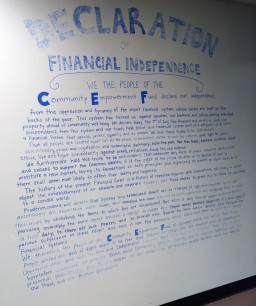
“We launched initially as a micro-loan program, and were giving out loans up to $300 for people looking to expand their opportunities through education or employment or housing,” said Jon Young, a founder and now co-director of the foundation. “Those were loans that we gave out to people that we really already knew in a lot of ways from the different writing groups, through HOPE, through the Talking Sidewalks, through community dinners. Things grew from there. Everything has always been fundamentally relationship based.”
After seeing much success and growth over its first two years as a college program, CEF officially became a nonprofit in June 2011. Around the same time, they also opened another office in Durham, expanding their reach to Orange and Durham Counties.
 Today, CEF works with people who are homeless or at risk of being homeless by offering three main services: relationship-based support, safe savings accounts and financial coaching. Through the help of student volunteers called Advocates, primarily coming from UNC and Duke, CEF helps people find jobs and housing, connect to community resources and build savings. CEF also provides matches savings accounts where a member can make a savings goal and once they reach that goal the organization will match it at 10 percent.
Today, CEF works with people who are homeless or at risk of being homeless by offering three main services: relationship-based support, safe savings accounts and financial coaching. Through the help of student volunteers called Advocates, primarily coming from UNC and Duke, CEF helps people find jobs and housing, connect to community resources and build savings. CEF also provides matches savings accounts where a member can make a savings goal and once they reach that goal the organization will match it at 10 percent.
Impacting the community
When asked to share what he feels the most impactful part of CEF is, Young thought back to a quote from a student advocate, Mary Katherine, that will be a part of the 2016 annual report.
“No matter what challenges or barriers you face no matter if you are an advocate or a member you are supported and valued here,” Mary Katherine said. “That is what makes CEF so special. No matter who you are or where you are from CEF is a safe place to find love and support.”
In the 2015 annual report, CEF had 760 members actively engaged in its programming, compared to just 14 when the foundation started in 2009. In 2015, 155 jobs were gained, 114 homes were secured and $193,881 were saved by its members.
Young believes that the foundation’s success lies with its ability to create a safe space for people who don’t often feel secure.
“A lot of the people that we work with aren’t really used to a safe space,” Young said. “They’re used to spaces that are invasive, rude, and traumatizing and dehumanizing, and they’re used to sort of operating in a survival mode where the system forces them to be selfish in a way in order to survive. I believe that what happened at CEF is that members find a place where they don’t have to be selfish, that actually through sharing themselves and their voice and their experience, they find that they can make a meaningful impact with the advocates they are working with.”
On its website, CEF reflects its core value of building a community by sharing stories of some of its members, showing many examples of the impactful work the organization accomplishes. One post shares poems written by Julius “Foot” Alston, who was able to purchase a home with his brother, Mike, with the help of CEF. Alston’s poems tell the story of how he and his brother managed to come out of homelessness. These poems help share community stories, which as Young and West both mentioned, is what CEF is truly all about.
“Work that we do isn’t just about the individual,” Young said, “but through these combined stories, we are able to connect people to larger systemic narratives that are very very real and very constantly afflicting the members that we work with.”
Graduation from the program
One of the biggest community events they hold is the annual graduation ceremony for CEF members.
 On Saturday April 29, CEF held a Spring graduation ceremony for their members and advocates. Members and advocates were served lunch and then invited to attend a graduation ceremony. During the ceremony, members got awarded for both reaching their savings goals and completing the Opportunity Classes in either the Chapel Hill or Durham offices. The advocates also were recognized during the ceremony and given a t-shirt and a piggy bank as a thank you for helping CEF during their time at college. The event concluded with a performance by the CEF Advocacy Choir.
On Saturday April 29, CEF held a Spring graduation ceremony for their members and advocates. Members and advocates were served lunch and then invited to attend a graduation ceremony. During the ceremony, members got awarded for both reaching their savings goals and completing the Opportunity Classes in either the Chapel Hill or Durham offices. The advocates also were recognized during the ceremony and given a t-shirt and a piggy bank as a thank you for helping CEF during their time at college. The event concluded with a performance by the CEF Advocacy Choir.
Goals for the future
CEF has seen incredible growth over the past three years. Their most recent accomplishment just occurred recently when West, Young and Janet Xiao, the third co-director, presented at TEDxUNC on April 2, 2017.
But, even with this success and recognition, the co-directors still have their sights set high for the future.
 In the 2015 annual report, CEF outlined their three-year strategic plan for 2016-2018. The plan listed five main goals to be completed in the next three years: to fully integrate financial services with partners providing emergency shelter, transitional housing and housing support, to improve coordination of member services through advocates to better assist the growing base of members in achieving goals, to advance CEF’s member’s achievement of employment and career goals, to promote sustained transition into housing and to invest in organizational sustainability, increased organizational effectiveness and deepened commitment to mission. These goals were set after taking feedback from a number of stakeholders and community partners.
In the 2015 annual report, CEF outlined their three-year strategic plan for 2016-2018. The plan listed five main goals to be completed in the next three years: to fully integrate financial services with partners providing emergency shelter, transitional housing and housing support, to improve coordination of member services through advocates to better assist the growing base of members in achieving goals, to advance CEF’s member’s achievement of employment and career goals, to promote sustained transition into housing and to invest in organizational sustainability, increased organizational effectiveness and deepened commitment to mission. These goals were set after taking feedback from a number of stakeholders and community partners.
In addition to this, West hopes to expand their impact in the counties they’re in now.
“Goals for us right now are to deepen impact in the geographies of where we are now,” West said. “We are not trying to expand to other counties necessarily, we’re really just trying to grow the number of members we are serving in Orange and Durham counties, and grow the depth of the services we are providing in those members.”
To accomplish this goal in the Orange County area, West hopes to build upon the integrated service delivery model, where other nonprofits can join with CEF to offer their services onsite as well, such as mental health clinics, veteran services, legal services and re-housing services. This will allow a more streamlined path for members to get the services they need.
In Durham county, the goals are flipped — West hopes to integrate CEF’s financial capability services directly with shelters, rehousing programs and workforce development providers to make their financial services and saving programs work well in the context of these other organizations. This could be accomplished by creating stronger partnerships with organizations and services in the community.
Regardless of where the organization will go in the future, the focus will always remain the same: investing in people and their potential.
While it is an important and primary goal of the organization to financially support members and help them transition out of homelessness, West believes that CEF’s biggest impact has been its ability to create a community for members, unlike other social service providers like it.
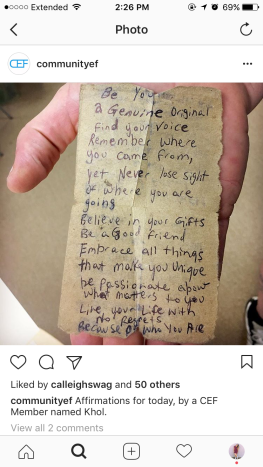
“When a member comes to CEF they’re joining a community,” West said. “They’re becoming a member, they automatically are joining something. Aside from the more tangible jobs and homes and savings, I think we are just consistently grounded by the fact that I think the deepest community impact we have is by fostering that community and the long-term relationships that all make it up.”
Though members will remember the home they bought or the job the got, the sense of self-worth and dignity that comes from joining CEF is what West believes they truly remember.
“Those are the things that I think make it have a deeper impact, is a lot of the sense of self-worth and dignity, are the much deeper places that I think we make an impact, and that persist much longer across time than the day-to-day wins.”

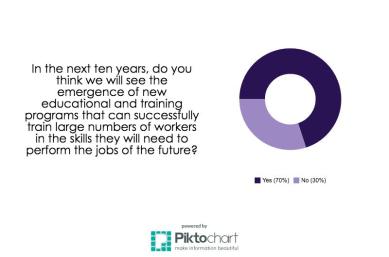 the emergence of new educational and training programs that can successfully train large numbers of workers in the skills they will need to perform the jobs of the future?”
the emergence of new educational and training programs that can successfully train large numbers of workers in the skills they will need to perform the jobs of the future?” 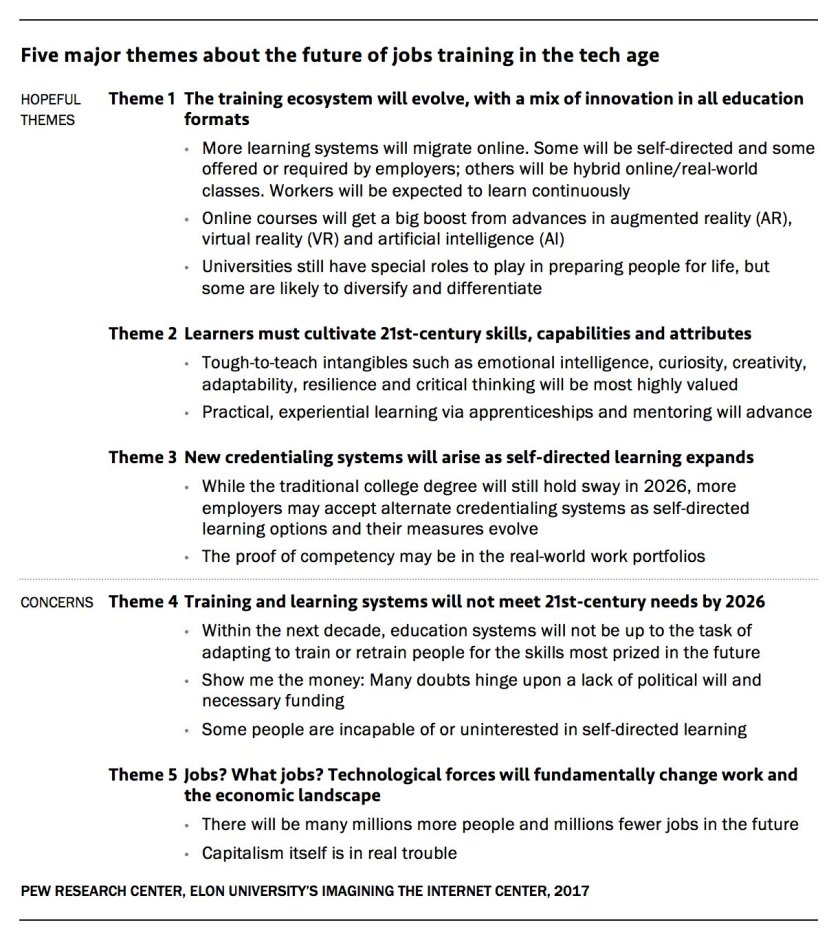
 of future valuable. Some of the most common ones mentioned were: adaptability, resilience, empathy, compassion, judgement and discernment, deliberation, conflict resolution, and the capacity to motivate, mobilize and innovate.
of future valuable. Some of the most common ones mentioned were: adaptability, resilience, empathy, compassion, judgement and discernment, deliberation, conflict resolution, and the capacity to motivate, mobilize and innovate. 


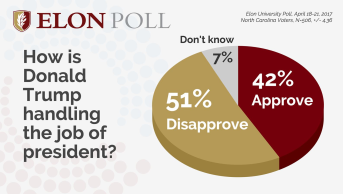 campaign trail, Trump made many promises about what he would get done within this 100 day time period. But, as this 100-day mark approaches, it is clear he has not completed many of his campaign promises.
campaign trail, Trump made many promises about what he would get done within this 100 day time period. But, as this 100-day mark approaches, it is clear he has not completed many of his campaign promises. 
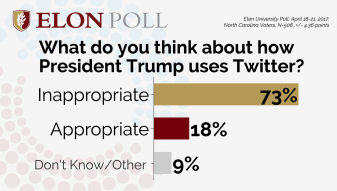 percent of voters find Trump’s use of Twitter to be inappropriate, with only 18 percent saying it is appropriate.
percent of voters find Trump’s use of Twitter to be inappropriate, with only 18 percent saying it is appropriate. The course, taught this semester by Samantha DiRosa, associate professor of art and environmental studies, is meant to be cross disciplinary. It combines elements of environmental theories and ethics with art and creative expression. For Midolo, the course has given her an outlet for creative protest.
The course, taught this semester by Samantha DiRosa, associate professor of art and environmental studies, is meant to be cross disciplinary. It combines elements of environmental theories and ethics with art and creative expression. For Midolo, the course has given her an outlet for creative protest.
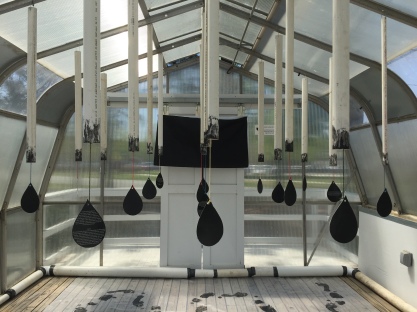 When viewers enter the greenhouse, they are met with more than a dozen pieces of
When viewers enter the greenhouse, they are met with more than a dozen pieces of

 after she received a ticket for reckless speeding. She was given 24 hours of community service and, unlike Smith, as able to choose the organization she worked for. She completed her hours at Allied Churches and Campus Kitchen at Elon.
after she received a ticket for reckless speeding. She was given 24 hours of community service and, unlike Smith, as able to choose the organization she worked for. She completed her hours at Allied Churches and Campus Kitchen at Elon.  Smith, was required to work with Goodwill Industries in Burlington, North Carolina. While he was completing his restitution hours at Goodwill, there were often many other volunteers working as well, whether they be voluntary or mandated. But, at a small store with such a large number of people working, Stevens felt his hours were unnecessary.
Smith, was required to work with Goodwill Industries in Burlington, North Carolina. While he was completing his restitution hours at Goodwill, there were often many other volunteers working as well, whether they be voluntary or mandated. But, at a small store with such a large number of people working, Stevens felt his hours were unnecessary.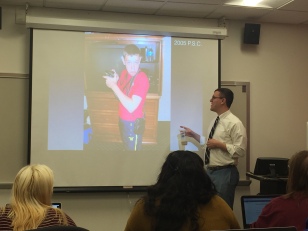 Al Drago graduated from Elon University in 2015. Less than two years later, his photos have been published in a number of major news outlets, such as The New York Times, Rolling Stone and The Washington Post.
Al Drago graduated from Elon University in 2015. Less than two years later, his photos have been published in a number of major news outlets, such as The New York Times, Rolling Stone and The Washington Post.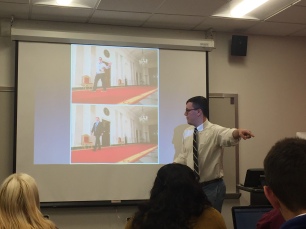 “The key is staying with a story that you’re really passionate about and you’re really engrained in.”
“The key is staying with a story that you’re really passionate about and you’re really engrained in.”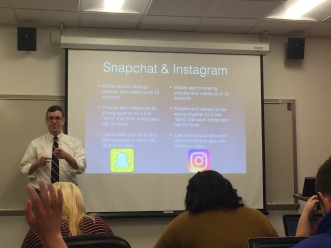 Drago also advised students on how to use social media. He reminded students that future employers always see what people post on their social media. But, a presence on social media is important in this digital age. “Embrace the platform” is one of the
Drago also advised students on how to use social media. He reminded students that future employers always see what people post on their social media. But, a presence on social media is important in this digital age. “Embrace the platform” is one of the Convocation. This year’s speaker, Dan Gilbert, is the Edgar Pierce Professor of Psychology at Harvard University.
Convocation. This year’s speaker, Dan Gilbert, is the Edgar Pierce Professor of Psychology at Harvard University.